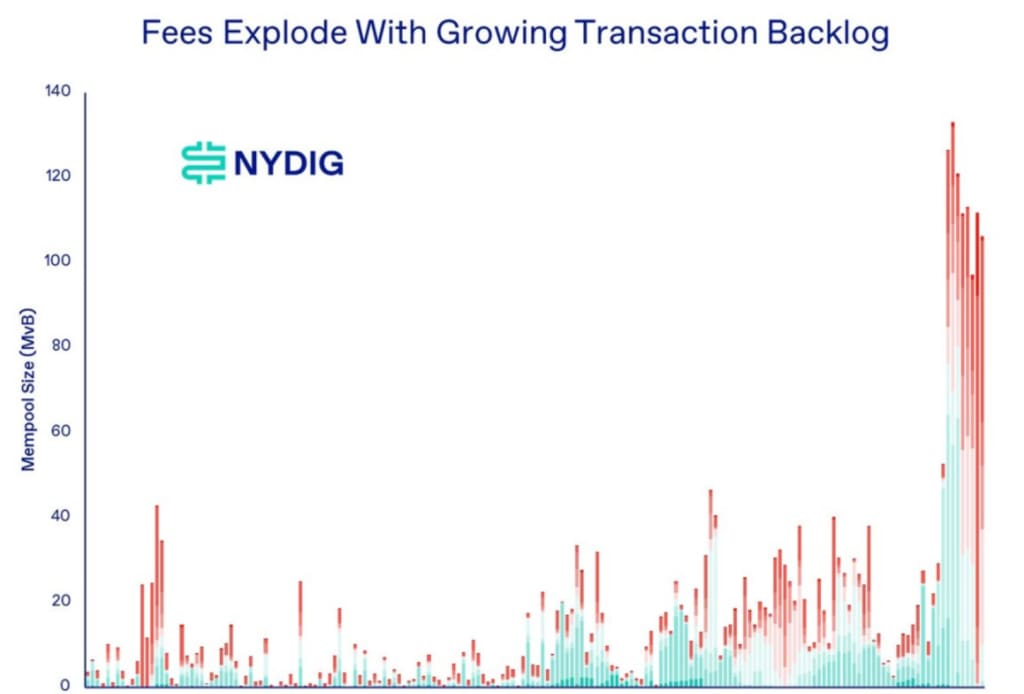Meme Frenzy, Increased Transaction Fees, BRC20 Leading a New Bitcoin Narrative
A new project is gaining popularity on the Bitcoin blockchain, leading to a surge in transaction fees.

BRC-20 Experiment: Redefining Bitcoin Blockchain
"BRC-20 Experiment" refers to a new standard on the Bitcoin network, inspired by Ethereum's popular ERC-20 standard. This standard defines the technology for issuing other digital assets on the Bitcoin blockchain using Ordinals. The definition, minting (creation), and transfer functions of BRC-20 tokens are achieved by writing data into the smallest divisible unit of Bitcoin, called satoshis (sat). Ordinals have long been synonymous with digital art, often regarded as NFTs. The inscription, a JSON-formatted text string, defines the desired actions, such as transferring a BRC-20 asset.
WEEX Note: Satoshis (sat) are the smallest divisible units of Bitcoin, enabling transactions priced in sat. Each satoshi is generated in chronological order based on mining time. In other words, satoshis inherently possess NFT properties: unique, indivisible, and potentially zeroable, with a minimum value of 1 BTC = 10^8 sat. We can consider satoshis as a special type of NFT. The Ordinals protocol adds an extension to this unique NFT, assigning each satoshi a number that points to different content carriers, such as JPG, TXT, MP4, GIF, ZIP, generating corresponding textual or image-based inscriptions. This process resembles annotating satoshis, hence known as inscription, which bestows derived meanings upon them.
Since its launch, the value of BRC-20 has experienced explosive growth, surpassing a total value of $177 million. This growth has led to a frenzy of trading activity, significantly impacting the Bitcoin blockchain. The increased demand for on-chain activities is evident in the mempool, the waiting room for unconfirmed transactions. The graph below illustrates the growing scale and fee rate (sats/vByte) of the mempool. With increased transaction demand, users must pay higher fees to have their transactions included in blocks by miners.
The intensification of network congestion may result in longer transaction waiting times and higher costs for users. However, this is good news for miners as their fee revenue has seen a significant increase in the past week or two. While most of the miners' income still comes from block subsidies rather than transaction fees, in the case of BRC-20, transaction fee revenue has jumped from 2%-4% to over 10%.
WEEX has noticed that on May 3rd, the daily Bitcoin transaction fees exceeded 3.37 million US dollars, reaching a new high since May 21, 2021. This is over 9 times the amount of approximately 370,000 US dollars on April 23, within just 10 days. On May 4th, the transaction fee surged even higher, exceeding 3.5 million US dollars.
While BRC-20 has been proven to be popular in a short period of time, it is unclear how long its popularity will last. However, at the very least, the BRC-20 trend will continue to drive innovation and creativity in the entire Bitcoin ecosystem, and all of this begins with the Ordinals protocol.
WEEX believes that controversial narratives often grab people's attention. Even criticism can achieve the effect of publicizing its narrative, increasing its propagation and influence. This is just like what Bitcoin has experienced since its inception. Controversy will make people think critically about these narratives, explore their values and biases, and amplify their value and benefits. On the other hand, as the block reward reduces in each cycle of Bitcoin halving and the entire Bitcoin network expands, the ecological incentive required to maintain the safe operation of the Bitcoin network is objectively increasing. This requires gradual expansion beyond the block reward. BitcoinFi, represented by Ordinals, provides useful exploration for Bitcoin in finding a substitute and new miner incentive methods.
More Bitcoin is Locked for Longer Periods
According to on-chain analysis data, Bitcoin holders are continuing to hold their Bitcoin for longer periods. The share and absolute number of tokens that have not moved for a year or longer are close to or at historical highs. The percentage of un-moved Bitcoin exceeds two-thirds of the total supply, equivalent to 13.1 million out of 19.4 million existing Bitcoin.
The increase in long-term holders strongly indicates that the market's attitude towards Bitcoin is changing. Although short-term price changes and Bitcoin transactions often make headlines, the reality is that Bitcoin is increasingly being used as a buy-and-hold asset. On-chain data proves this.
Bitcoin Hodling and Market Volatility
With the increasing number of long-term Bitcoin holders, the supply of Bitcoin available for short-term trading continues to decrease, which may lead to market volatility (WEEX note: equivalent to decreased liquidity resulting in larger spreads). Given Bitcoin's fixed supply nature, this also means that there is less Bitcoin available for others to purchase, which could drive up prices if demand for Bitcoin increases.
Typically, during price declines and early stages of a bull market, the amount of long-term holdings increases. In the mid-to-late stages of a bull market, the amount of long-term holdings decreases as holders sell and realize profits. Considering the current upward trend in long-term Bitcoin holdings, we believe this is a positive indicator, suggesting that we are still in the early stages of a bull market.
Fed Rate Hike May Aggravate Banking Crisis
Last week, the Federal Open Market Committee (FOMC) raised the target federal funds rate by 25 basis points. The move itself was not controversial, but during the press conference, the Fed continued to assert that the U.S. banking system is "healthy and resilient." Perhaps the Fed intended to reassure the market, but this statement seems disconnected from reality. Just a few days ago, we witnessed JPMorgan Chase acquiring First Republic Bank, the fourth bank to fail in this round of banking crisis (WEEX note: the first three being Silvergate, Silicon Valley Bank, and Signature Bank). Adjusted for inflation, the severity of this regional banking crisis in 2023 has exceeded that of the global financial crisis in 2008.
The side effect of the rapid rate hikes by the FOMC over the past 14 months is the snowballing of unrealized losses in bank-held assets. We have reason to believe that the Fed's desire to tame inflation, coupled with the banks' inadequate preparation for the rate hike cycle, is a significant factor contributing to this banking crisis.
If you are keen to become a WEEX Partner, do reach out to our Head of Global Expansion at [email protected]
Connect With the Community Here:
Discord | Facebook | Twitter | Telegram
Official Website: https://weex.com/en/
Discord: https://discord.com/invite/2CFnGbMzbh
Facebook: https://www.facebook.com/Weexglobal
Twitter: https://twitter.com/WEEX_Official
Telegram: https://t.me/Weex_Global
About the Creator
WEEX Global
WEEX is one of the world's top futures exchanges in terms of trading depth, aimed at providing the most professional, secure, and private futures trading services.






Comments
There are no comments for this story
Be the first to respond and start the conversation.